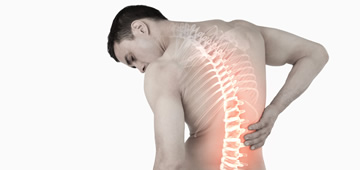Lumbar Hernia Correct And Falses

80% of adults have at least one complaint of bodily pain during a period of their lives. Although the herniated disc is not common in the adult group, generally between the ages of 30 and 60, it can occur in almost all ages.
1. Who is seen in the hernia?
It is important to mention the risk factors that may lead to a significantly higher incidence of lumbar puncture than a group in which the lumbar spine is particularly visible.
2. What are the risk factors?
Obesity: Overweight is the most common cause of back pain. The weight of our bodies is the spine. Excessive exposure to discs that provide the flexibility of the spine and serve as a kind of support cushion results in deformation and deterioration of the shape. The herniated disk, which loses its normal shape and swells outward, affects the function of the nerves that it presses, resulting in various signs and symptoms. In pregnancy, the forward displacement of the body's center of gravity causes an additional load on the vertebrae.
Inactivity: It is not just our spine that carries the burden of our bodies. All the neck, back and waist muscles extending along the spine, the function of the abdominal muscles is very important. Since the muscles are not strong enough to be immobilized, such as not exercising regularly, the weight of the muscles that the muscles can carry is also an additional burden on the spine. This load causes the discs to rupture.
Smoking: It has been reported in many publications that cigarette smoke increases disc degeneration and slows healing.
To act in accordance with the physiology of the spine in daily life: In our daily life, a series of movements, such as lifting weights, pushing objects, pulling, unintentionally, should be treated according to spine physiology. When a load is removed from the ground, the knees must be broken and should be lifted after load. Care should be taken when lifting the load on the shoulder (such as laundry hangers, cupboards), if done with a height such as a ladder or chair, these things should be done and not be extended upwards. During daily work, especially at the desk, sit in the exact vertical position and the chair should be selected to support the waist girth. If the chair is not suitable, an additional pillow to support the waist girth will do the same job. When standing upright, suddenly the waist should be avoided from overloading. It must first turn sideways, then pivot the feet down the edge of the bed and be supported by supporting the elbows.
Vocational factors: occupations requiring heavy physical activity and heavy lifting. Occupations that require continuous bending, bending and turning, Occupations that subject the body to continuous vibration such as cars, buses, trucks, use, Occupations that require long standing or sitting, Soccer, weightlifting, rowing and wrestling waist pain and waist circumference increase.
3. How to protect from the waist hole? What are risky positions and movements?
They are inviting events to lift the objects on the ground by leaning without breaking the knees, pushing and pulling heavy objects without breaking the knees, lifting the load on the shoulder and reaching upwards, working long without lumbar support at the table, and carrying heavy loads at long distances. Exercising regularly in the same way is also extremely useful in preventing the back fingernail. In spite of all precautions, hernia can develop. Attention should be paid to the recommendations of a brain and neurosurgeon to be referred to in this case.
4. Is every back pain a belly button? Does every belly button need surgery?
Only 3% of lumbar pain is due to the necessary herniated discs to be operated on. Therefore, according to the findings of the physician examination and the examinations to be performed, the first recommended bed rest and pain reliever and muscle relaxant drugs are used. Despite these precautions, if the pain and stiffness of the legs do not reach to lethargy and muscular weakness, the solution is surgery.
